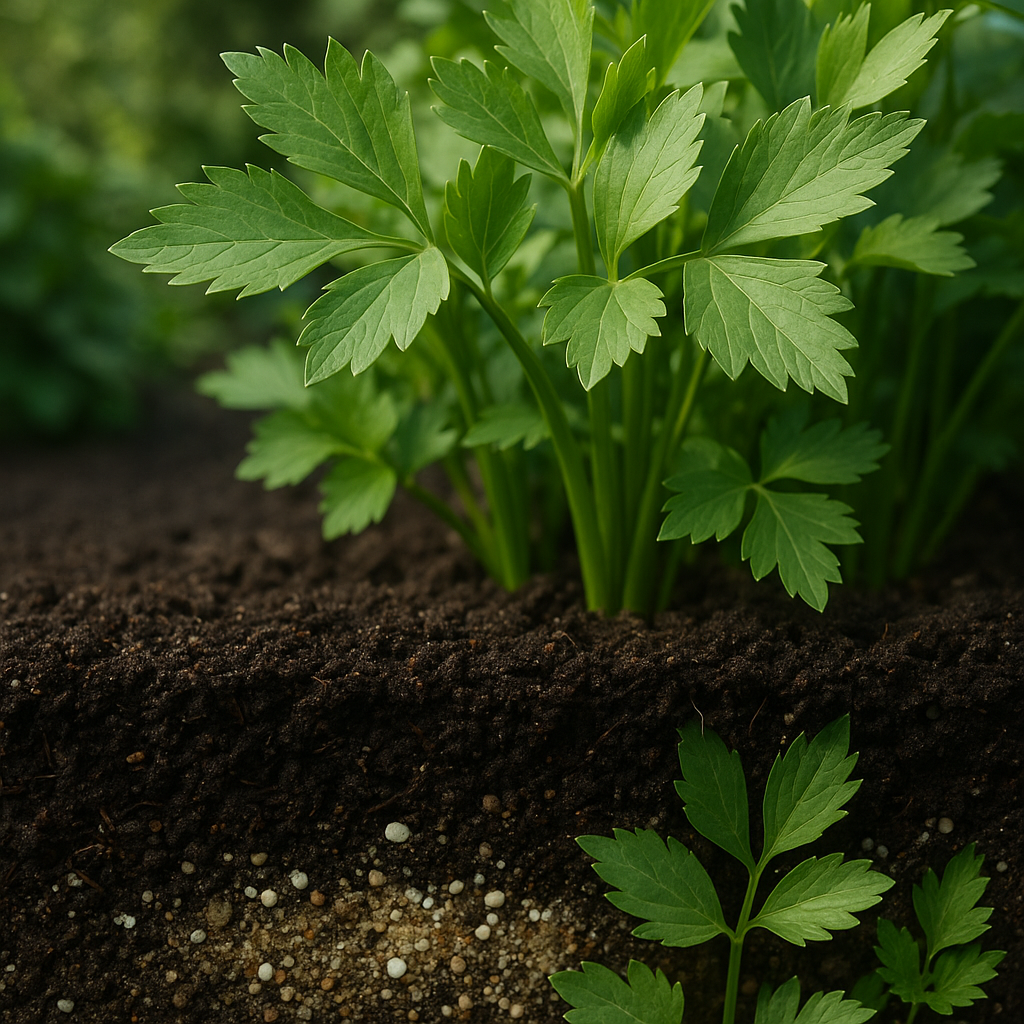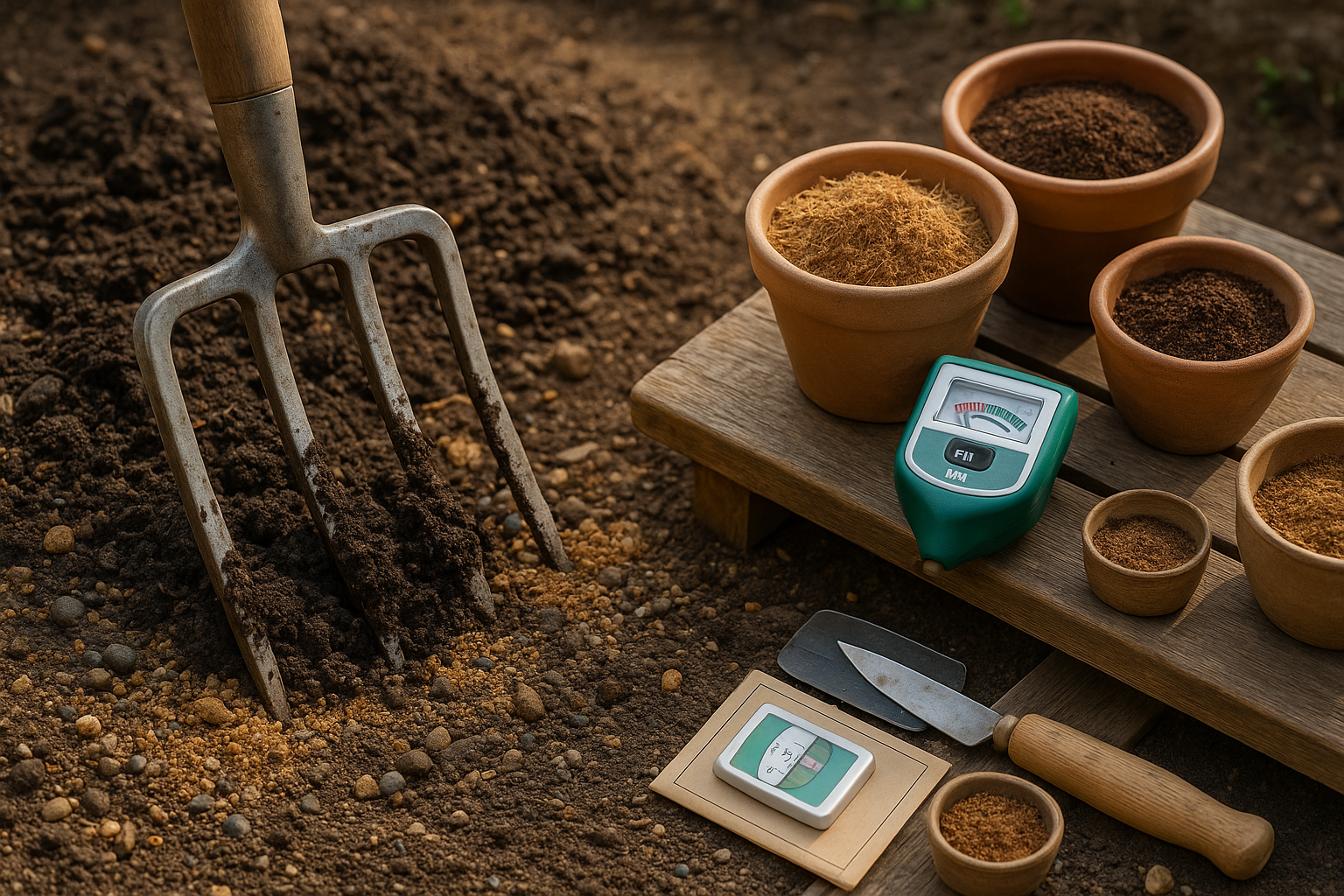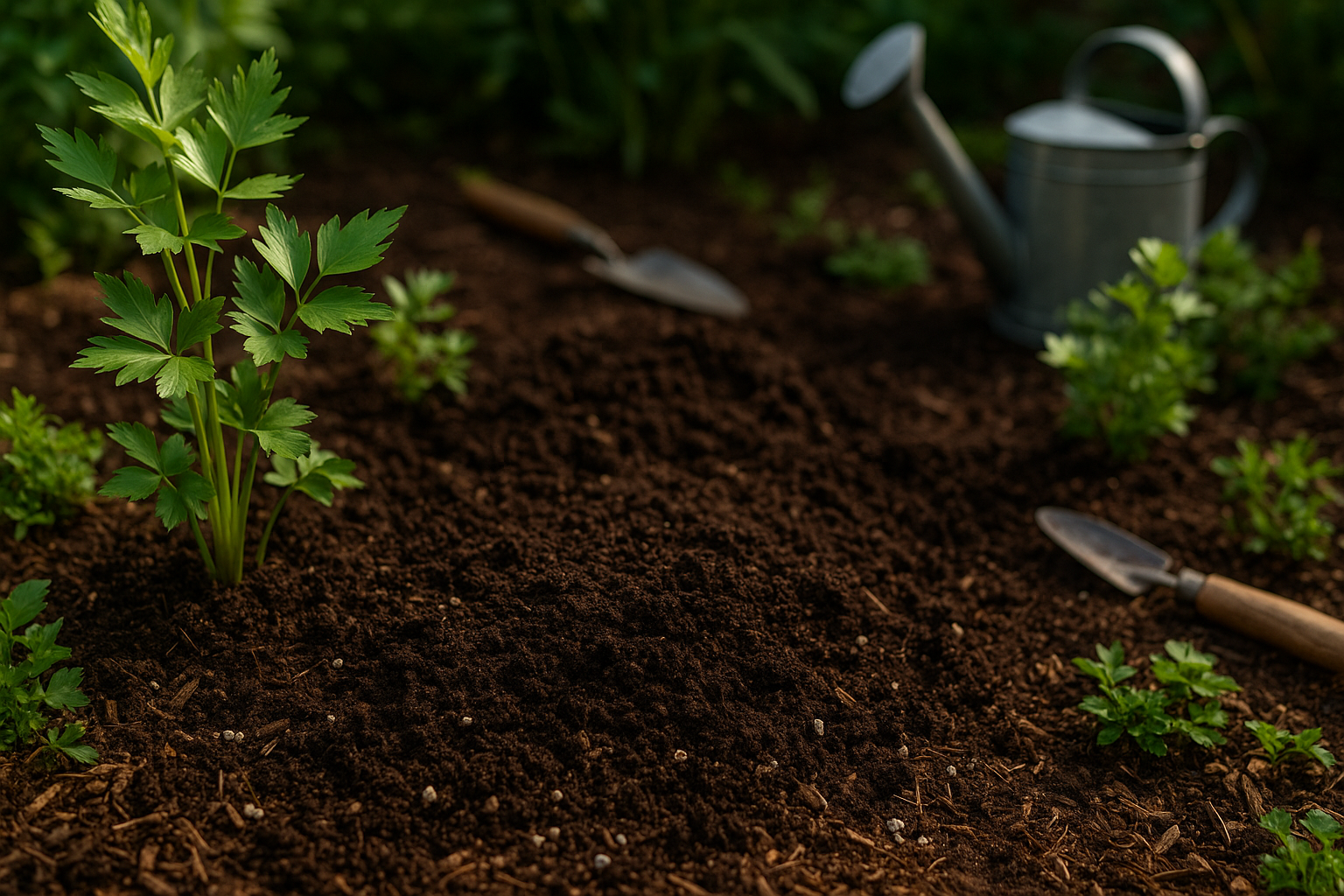Introduction
If you’re searching for the best soil for lovage, you’re likely already intrigued by this herb’s unique role in kitchen gardens and herbal medicine cabinets. Lovage, with its celery-like flavor, is prized for jazzing up soups, salads, and even teas, while its leaves and seeds are valued in natural remedies for digestion and vitality.
But did you know that the quality of soil you use can make a dramatic difference in how robust, flavorful, and resilient your lovage plants become? Whether you’re an experienced herb gardener or just branching out into perennial herbs, understanding soil requirements is essential. Poor soil can lead to stunted plants with lackluster leaves, while the right mix will give you lush, aromatic harvests year after year.
In this article, we’ll break down everything you need to know about optimizing growing conditions for this versatile herb. You’ll learn which soil types and amendments work best, real-world tips for garden or container planting, and the role of drainage, nutrients, and pH levels in boosting plant health. Get ready to transform your lovage crop with strategic soil choices—your recipes (and home apothecary) will thank you!
Understanding Lovage’s Soil Preferences

Lovage (Levisticum officinale) originates from the cool, damp regions of southern Europe and southwest Asia, where it thrives along fertile riverbanks and meadows, absorbing moisture and nutrients from organically rich soil. To recreate these favorable conditions in your garden, focus on your soil’s texture and fertility—lovage grows best in deep, loamy soils that retain moisture without waterlogging the roots.
Good drainage is essential, so enrich the soil with compost and well-rotted manure to prevent compaction while boosting fertility. Heavy clay soils can be improved by adding sand or perlite to enhance aeration, while sandy soils benefit from extra organic matter to help retain nutrients.
Lovage is a heavy feeder, so regular soil amendments encourage lush, tall growth and abundant foliage—ideal for culinary use. Soil pH is equally important: lovage prefers a neutral to slightly alkaline environment, with an ideal pH between 6.5 and 7.5. This range ensures nutrient availability and healthy roots; overly acidic soils can stunt growth and cause yellowing leaves.
If you’re unsure about your soil’s pH, try a simple home test kit or consult your local extension service. Adjust the pH with garden lime if it’s too low. By replicating lovage’s native habitat—moist, nutrient-rich, well-drained soils with the right pH—you’ll enjoy robust plants year after year, perfect for flavoring soups, stews, or herbal teas straight from your garden.
Soil Preparation

Getting your soil ready is a crucial step for growing healthy lovage plants, whether you’re working in garden beds or pots. Start by loosening the top 12 to 18 inches of soil, since lovage roots grow deep.
If your garden soil is heavy clay, mix in plenty of compost, well-rotted manure, or leaf mold—at least 2 to 4 inches worked into the soil—to improve texture and drainage. For sandy soils, organic matter is just as important, as it helps retain nutrients and moisture. You can also add coconut coir or peat moss to improve water retention.
For very poor drainage, consider raising your beds by 6 to 12 inches or using large, deep pots to prevent soggy roots. To boost aeration, blend in perlite, coarse sand, or even fine gravel. These materials help excess water drain away and increase oxygen flow to the roots.
A simple test: after watering, the soil should feel moist but never waterlogged. Also, check for compacted spots—these can be gently broken up with a garden fork. Before planting, rake the surface smooth and remove any stones or debris that could hinder root growth.
Taking time to enrich and structure your planting area now pays off later with more vigorous, resilient lovage. Whether you’re a city balcony gardener or working in a backyard patch, paying attention to your soil is the foundation for gardening success.
Best Soil Mix Recipes for Lovage (In Ground & Pots)
When growing lovage, the right soil mix can make all the difference, whether you’re planting it directly in the ground or in pots.
For garden beds, aim for a mix of 50% quality topsoil, 40% well-rotted compost, and 10% coarse sand or perlite to ensure proper drainage—lovage hates wet feet.
For containers, use a lightweight blend: 40% potting soil, 40% compost, and 20% perlite or coarse sand to promote aeration and prevent waterlogging.
Lovage prefers slightly alkaline to neutral soil, with an ideal pH of 6.5 to 7.5. To check your soil’s pH, use a simple home soil test kit, available at garden centers or online.
If your soil is too acidic, add a handful of garden lime and mix well; for soil that’s too alkaline, blend in some peat moss or composted manure.
Before planting, dampen your mix and squeeze a handful; it should hold together but break apart easily. This structure keeps roots healthy and supplies them with nutrients from compost, while drainage materials prevent root rot—a common issue for lovage in heavy soils.
Once established, mulch around your lovage with shredded leaves or compost to enrich the soil further and retain moisture, making maintenance easier.
With these straightforward recipes and quick soil tweaks, you’ll give your lovage the perfect foundation for lush, flavorful growth all season long.
Maintaining Healthy Soil for Lovage
Keeping your soil healthy is crucial for thriving lovage plants, and small, consistent steps can make a big difference. Mulch your lovage beds with organic material like straw or chopped leaves—this helps retain moisture, suppress weeds, and naturally improves soil texture as it breaks down.
Throughout the growing season, regularly mix in compost or well-rotted manure around your plants; this feeds the soil, boosts beneficial microbes, and ensures a steady supply of nutrients. It’s also important to keep soil evenly moist, as lovage doesn’t like soggy roots or dry spells, so adjust your watering routines based on rainfall and temperature.
Watch for signs that your soil needs help:
- Stunted growth or pale leaves can indicate a lack of nutrients.
- Water pooling on the surface or hard, cracked soil points to compaction.
If you notice compaction, gently loosen the earth around plants with a garden fork to improve aeration and drainage. For nutrient loss, top-dress with compost, and avoid heavy, salt-based chemical fertilizers, which can damage roots and disrupt the soil ecosystem.
A light application of a balanced organic fertilizer in early spring—something with equal parts nitrogen, phosphorus, and potassium—will support lush growth without overwhelming the plant. By tending to your soil with these thoughtful practices, your lovage will stay robust season after season.
Common Soil-Related Problems and How to Fix Them
Lovage plants often show clear signs when soil quality isn’t up to par—yellowing leaves, droopy stems, poor flavor, and stunted growth are the biggest red flags. If your lovage looks pale or its growth seems halted, start by checking for drainage issues: water pooling at the surface or soggy roots usually indicate compacted or clay-heavy soil.
Improve drainage by mixing in coarse sand or compost, and avoid letting water sit stagnant. Test the soil pH, since lovage prefers a slightly alkaline range (6.5–7.5); acidic soil can cause slow growth and yellowing leaves. Applying garden lime can correct overly acidic soil, but always retest after making amendments.
Low fertility is another common issue—spindly growth often signals a lack of nitrogen or other nutrients. Top-dress with a balanced organic fertilizer or work in well-rotted compost to give your plants a boost. For long-neglected beds or persistent problems, consider reworking the existing soil by digging down 8–10 inches and mixing in organic matter.
If drainage remains poor after these efforts, carefully lift the plant, replace the soil in the area, and replant. Mulch generously to support moisture and nutrient retention as your lovage recovers.
Conclusion & Quick Reference Table
Growing healthy lovage starts with the right soil—aim for rich, well-drained earth that holds moisture but doesn’t get waterlogged. Mix in plenty of organic matter like compost to boost fertility, and check the pH (lovage prefers neutral to slightly alkaline, around 6.5-7.5). Don’t let the soil dry out completely, but also avoid soggy conditions, which encourage root rot. Remember to mulch, as it helps lock in moisture and keep weeds away.
Every garden is unique, so watch how your lovage responds and tweak your care routine if needed; yellowing leaves may signal poor drainage, while stunted growth points to nutrient deficiencies. No one-size-fits-all approach works for every gardener—let your own soil tell you what it needs.
Quick Reference Table
| Do’s | Don’ts |
|---|---|
| Add compost regularly | Let soil dry out |
| Mulch to retain moisture | Use heavy clay soil |
| Test soil pH | Over-fertilize |
| Improve drainage | Ignore drainage issues |
